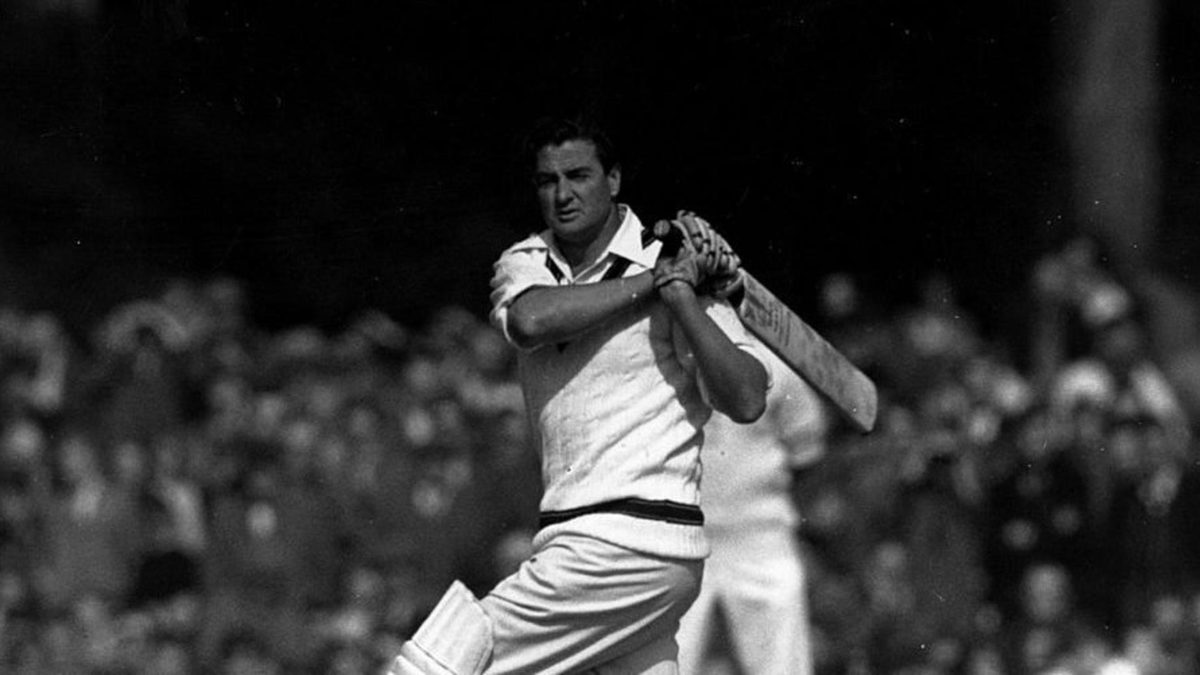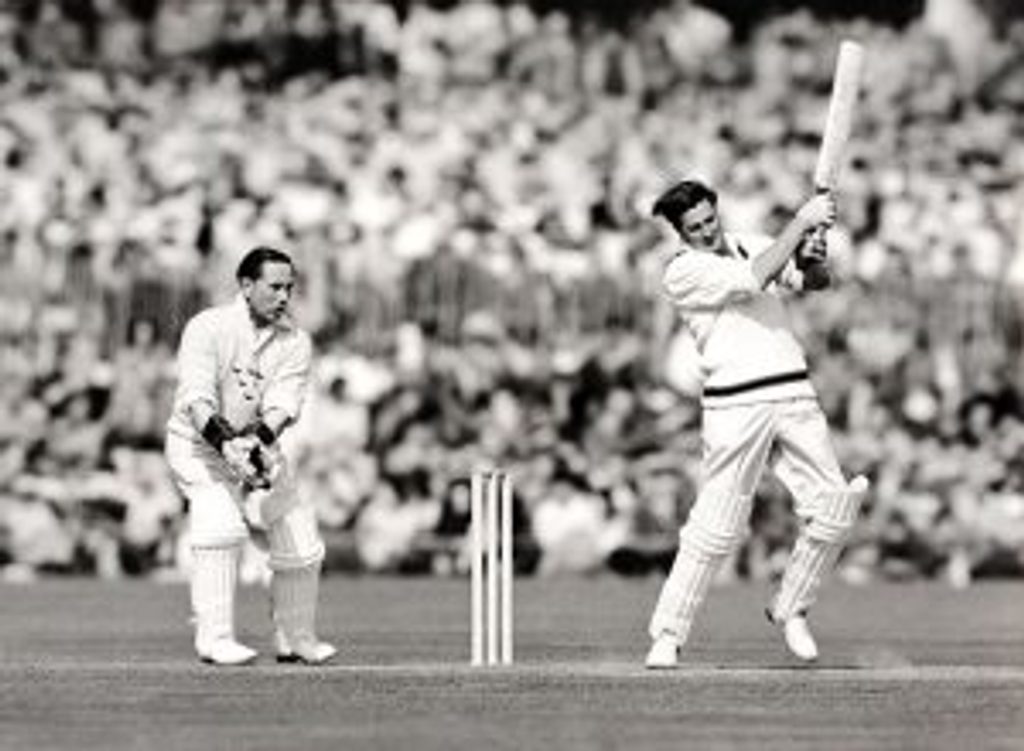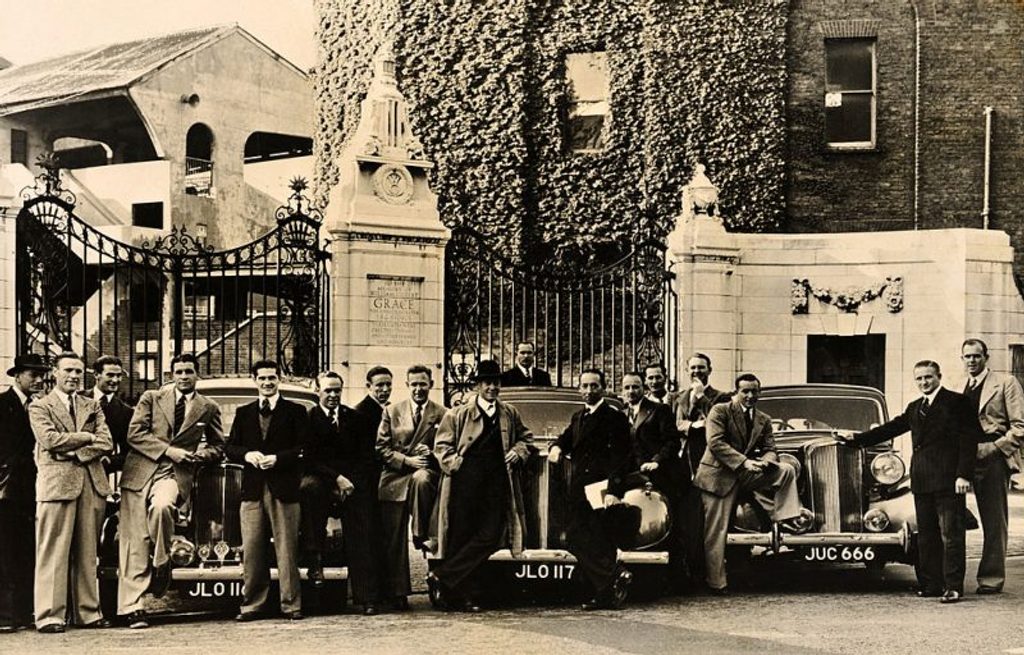
England may have regained the Ashes in 1953, but the most charismatic entertainer on either side was the Australia all-rounder Keith Miller. He was a Wisden Cricketer of the Year the following spring.
Keith Miller’s Test career continued until 1956 when he retired after scoring 2,598 runs and taking 170 wickets.
Even the Golden Age of cricket would have been enriched by a character so colourful as Keith Ross Miller, proclaimed by many as Australia’s finest all-rounder since the retirement of MA Noble some 40 years ago. Little quarrel could be found with this description. In the 1953 Test series with England, Miller emulated the hitherto unique achievement of Wilfred Rhodes with 2,000 runs and 100 wickets in international cricket.
Yet figures are the last thing by which this unpredictable personality, a man with the instinctive flair for turning a crowd’s annoyance into instant delight, should be assessed. Miller has always placed the fun of the game above every consideration. No doubt, had he consistently applied himself to all situations with the determination he has produced at moments of crisis, his batting and bowling averages would have been higher and, in his 40 Tests, he would already have exceeded the 2,325 runs and 127 wickets of Rhodes.
Today we remember that great @cricketcomau all-rounder and larger-than-life character Keith Miller. Set aside a few minutes of your Friday to read his brilliant @WisdenAlmanack obituary – https://t.co/3hol7byYdO #wisdenobits
— Wisden Almanack (@WisdenAlmanack) October 11, 2019
Maybe so, but that would not have been Miller, of the few personal cricket ambitions, who thrives on incentive but takes scant pleasure in cheap runs or wickets. A true guide to the estimation of his fellow cricketers is that nearly every captain of a country defeated by Australia in her magnificent post-war run believed that, with Miller on his side, the issue would have been far closer, or have gone the other way.
The place and circumstance of Miller’s birth were not without coincidence. He, the youngest of four children, was born at Sunshine, Melbourne, on November 28, 1919, at a time when Sir Keith Smith and Sir Ross Smith were creating world history with the first flight from England to Australia. It took 27 days 20 hours. His parents gave him the Christian names of the two famous airmen. Years later his own exploits in the air, as a night fighter pilot, earned for him a reputation as a dashing, devil-may-care fellow which his subsequent approach to big cricket confirmed.
As a boy Miller, now 6ft 1in, was below average size, and his first attempts at hitting a hard ball on rough paddock pitches resulted in so many painful knocks that he changed to a soft ball. In this way he learned to play his strokes without fear of physical injury. While a pupil at Melbourne High School he joined the local Elsternwick club. One of his memories of that period concerns his one game for the first team. Play was possible only on the first day, throughout which Elsternwick fielded. Miller, picked as a batsman, did not bowl. Next match he was dropped, on the grounds that he was too slow in the field!
Soon afterwards EV Carrol, a Victoria State player, saw him at practice on a friend’s private pitch and invited him to join the South Melbourne club of which he was coach. Miller immediately went into the first XI, using a cut-down bat on account of his lack of height and weight. In his first season he scored 61 against the neighbouring Carlton club. In recognition of his innings, Carlton awarded him a cup, presented to him next day in the school classroom by his form master, the Carlton captain, WM Woodfull, captain of Australia. At that time Miller, who lived near the Caulfield Racecourse, was so tiny that he hoped to become a jockey, but between 16 and 17 he grew more than a foot and any such idea had to be abandoned. Even so, Miller has retained his love of horses and horseracing. Most of his free days on tour are spent at the racecourse.
In the South Melbourne side Miller quickly won a reputation as a hard-hitting batsman, and while still at school he was picked for Victoria second XI. An innings of 181 against Tasmania led to his promotion to the first team in the 1939/40 season. In his fourth match he scored 108 against a South Australian attack including Grimmett, Ward and Waite, all Test match bowlers. Bradman, who played in the same game – and scored 267 – was much impressed, and no less an authority than Clem Hill forecast a fine future of the batsman. Miller still did no bowling and many people in Australia were surprised when in 1945 they heard of his taking wickets for the Australian Services in their Victory matches in England. At first he was purely a change bowler, but, when AG Cheetham went home, Miller used the new ball and, when fit, he has done so ever since.
Thus, purely through a war-time expedient, Australia found a match-winning bowler. Miller thoroughly enjoyed his cricket in England in that happy season, and surely none present will forget his glorious innings at Lord’s for Dominions against England. One of his seven sixes sent the ball to the top of the broadcasting box above the England dressing room. By flawless, exhilarating cricket Miller made 185 in two and three-quarter hours. At one period he and Constantine scored 117 in three-quarters on an hour.
 In the 1946/47 Test series he finished second to Bradman in batting, with 384 runs, average 76.80
In the 1946/47 Test series he finished second to Bradman in batting, with 384 runs, average 76.80
Returning to Australia, Miller moved to New South Wales, where he rapidly established himself as an all-round cricketer of unusual skill. In the 1946/47 Test series he finished second to Bradman in batting, with 384 runs, average 76.80, and second to Lindwall in bowling, with 16 wickets for 20.87. Although then regarded essentially as a fast bowler with the ability to produce paralysing bursts of speed, he showed his versatility by bowling off-breaks on a sticky pitch in the first Test, capturing seven wickets for 60.
In the fourth Test he made a brilliant 141*, containing one typical Millerism. Resuming his innings on the third day, he swept the first ball, from Wright, for a mighty six. His was the most attractive batting of the series. Moreover, he and Lindwall began a fast bowling combination which was to be the biggest single factor in Australia’s cricket domination for seven years. Withal he showed himself to be a slip fieldsman in a class of his own.
When Lindwall broke down in the first Test of 1948 Miller rose to the occasion with some of the best and most hostile fast bowling since Larwood in his prime. He shattered England’s hopes of a big first-innings score by clean bowling Hutton and Compton quickly – and got them again in the second. Back trouble, a legacy of a crash landing from 100ft in war-time, prevented him from bowling in the second Test, and from time to time since this has hampered his free movement. Afterwards in 1948, Bradman used him sparingly as a bowler.
In Australia again, Miller experienced a poor season and he was omitted from the side chosen for the 1949/50 tour of South Africa. Later, after a car accident to Johnston, Miller was sent for, and his performances in the Tests fully justified the board’s decision. Against FR Brown’s side in Australia in 1950/51 Miller headed the Test batting averages and was second to Iverson in bowling. His best feats were reserved for Sydney and Adelaide.
 The 1948 Australian team outside Lord’s. Miller is standing third from the left
The 1948 Australian team outside Lord’s. Miller is standing third from the left
England were 128-1 at Sydney when Miller was summoned from the boundary where, between overs, he had been talking to spectators. In four overs with an old ball he changed the game by dismissing Hutton, Compton and Simpson. He followed with an innings of 145*, which put Australia in a winning position. At Adelaide he hit his wicket trying for the single to complete his century, and, when England were fighting for a draw, settled the game by taking three wickets in three overs – with off-breaks.
These are some of the passages in the cricketing life of a gifted athlete who is capable of being anything except dull. Whether bowling a lightning bumper, an outrageous but wicket-taking googly, smiting an enormous six, shaking himself from apparent somnolence to make a dazzling slip catch, being bowled first ball attempting a gigantic ungainly sprawling stroke, or answering the crowd with his own spontaneous gestures, Miller commands attention and provides something for cricket-lovers to remember in the dark winter months before the next summer sun. As a batsman, Miller’s game is founded on driving and cutting, strokes he plays with grace and immense power. He is a natural bowler with a perfect action and tremendous shoulder movement in the follow through. He can bowl anything from any run-up.
Miller began the 1953 tour of England with innings of 220*, 42 and 159*. He finished with 67, 68, 9 and 262*, so making 827 runs in seven innings, average 206.25. Between these periods Miller scored only 606, including 109 on his favourite Lord’s pitch, in 24 innings. Suggestions, not for the first time, were made that the falling away in his batting hinged on the increased demands on his bowling. As a loyal team man, Miller realised the necessity for the captain to make the fullest use of whatever bowling was in the side, but no doubt the mental as well as physical exertions of bowling combined with the occasional attacks of fibrositis in his back took the edge from his concentration on batting.
Except when injury kept him out of the fifth Test against South Africa in 1952/53, Miller played in every post-war Test for Australia to the end of the 1953 tour of England. In those games he scored 2,117 runs and took 117 wickets. In first-class cricket his record then was 40 centuries and 360 wickets, his 262* in his last innings in England being the highest of his career. Miller, who is employed by a Sydney newspaper, is married, the father of three sons, and a non-smoker. Beside cricket, he played for Victoria and New South Wales at Australian Rules football.








